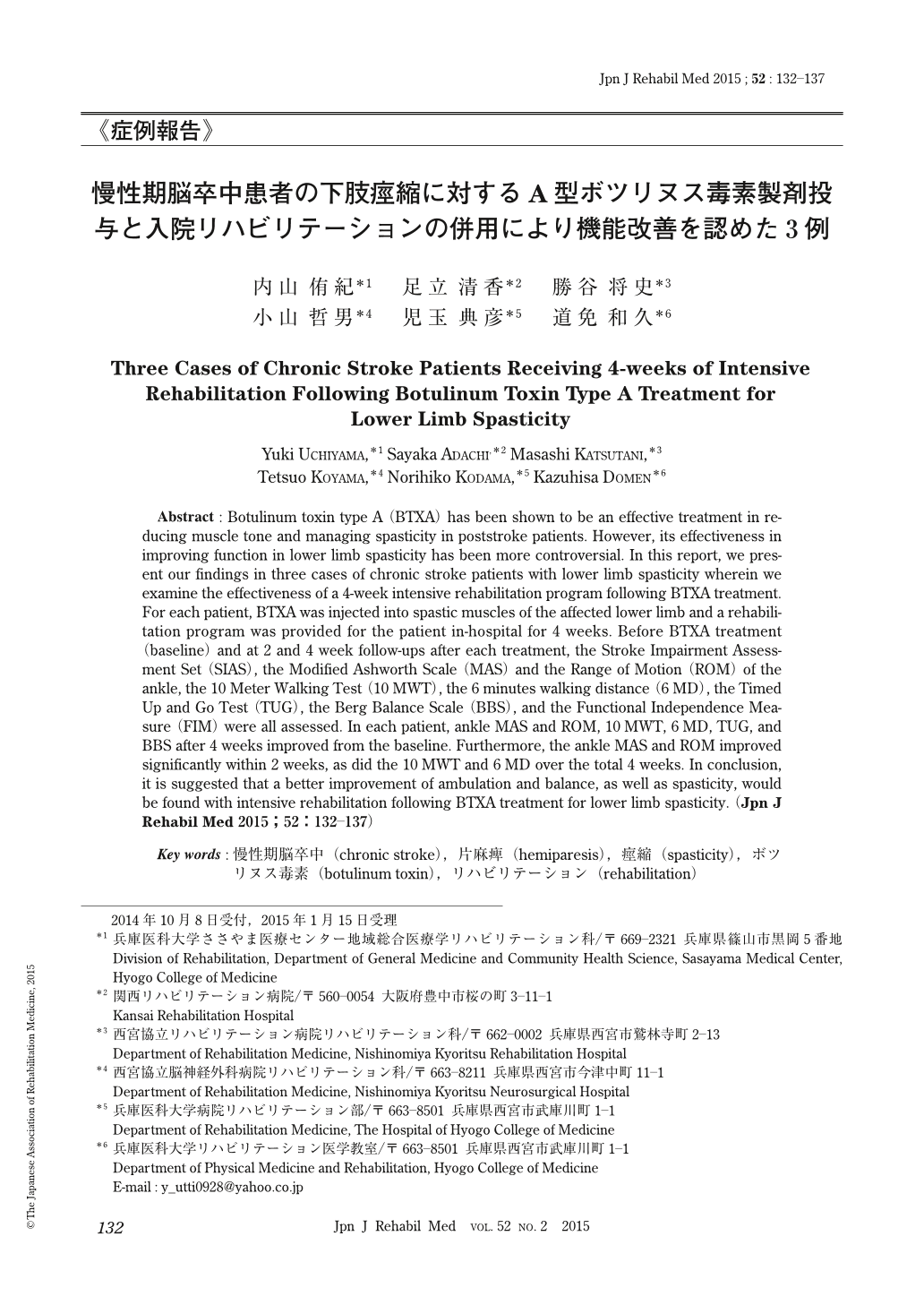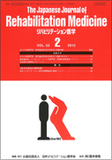Japanese
English
- 販売していません
- Abstract 文献概要
- 1ページ目 Look Inside
- 参考文献 Reference
はじめに
脳卒中後の下肢痙縮に対し,2010年A型ボツリヌス毒素製剤(商品名:ボトックスう®,以下BTXA)の保険適用が認可され,本邦の脳卒中治療ガイドラインで推奨されている)1).しかし,下肢痙縮に対するBTXAの効果に関するこれまでの無作為化比較試験(RCT)では,下肢痙縮は改善するものの,機能改善を得ることは難しいとされてきた2〜5).
本邦では,BTXAの効果に関し,2010年の木村らの治験の報告5,6)以降,上肢痙縮に関する報告は散見されるが,下肢痙縮に関する報告はない.BTXAは12〜16週程度の効果が持続する7)が,下肢痙縮に対するBTXA投与後のリハビリテーション(以下,リハ)の効果は未だに明らかではない.
当院は療養病床のリハ病棟を持ち,慢性期脳卒中患者の入院リハを行っている.今回,慢性期脳卒中の下肢痙縮患者に対し,BTXA投与後に4週間の入院リハを施行した結果,下肢痙縮のみならず歩行能力やバランスの改善を認めた3症例を経験したため,文献的考察を加えて報告する.
Abstract : Botulinum toxin type A (BTXA) has been shown to be an effective treatment in reducing muscle tone and managing spasticity in poststroke patients. However, its effectiveness in improving function in lower limb spasticity has been more controversial. In this report, we present our findings in three cases of chronic stroke patients with lower limb spasticity wherein we examine the effectiveness of a 4-week intensive rehabilitation program following BTXA treatment. For each patient, BTXA was injected into spastic muscles of the affected lower limb and a rehabilitation program was provided for the patient in-hospital for 4 weeks. Before BTXA treatment (baseline) and at 2 and 4 week follow-ups after each treatment, the Stroke Impairment Assessment Set (SIAS), the Modified Ashworth Scale (MAS) and the Range of Motion (ROM) of the ankle, the 10 Meter Walking Test (10MWT), the 6 minutes walking distance (6MD), the Timed Up and Go Test (TUG), the Berg Balance Scale (BBS), and the Functional Independence Measure (FIM) were all assessed. In each patient, ankle MAS and ROM, 10MWT, 6MD, TUG, and BBS after 4 weeks improved from the baseline. Furthermore, the ankle MAS and ROM improved significantly within 2 weeks, as did the 10MWT and 6MD over the total 4 weeks. In conclusion, it is suggested that a better improvement of ambulation and balance, as well as spasticity, would be found with intensive rehabilitation following BTXA treatment for lower limb spasticity.

Copyright © 2015, The Japanese Association of Rehabilitation Medicine. All rights reserved.


